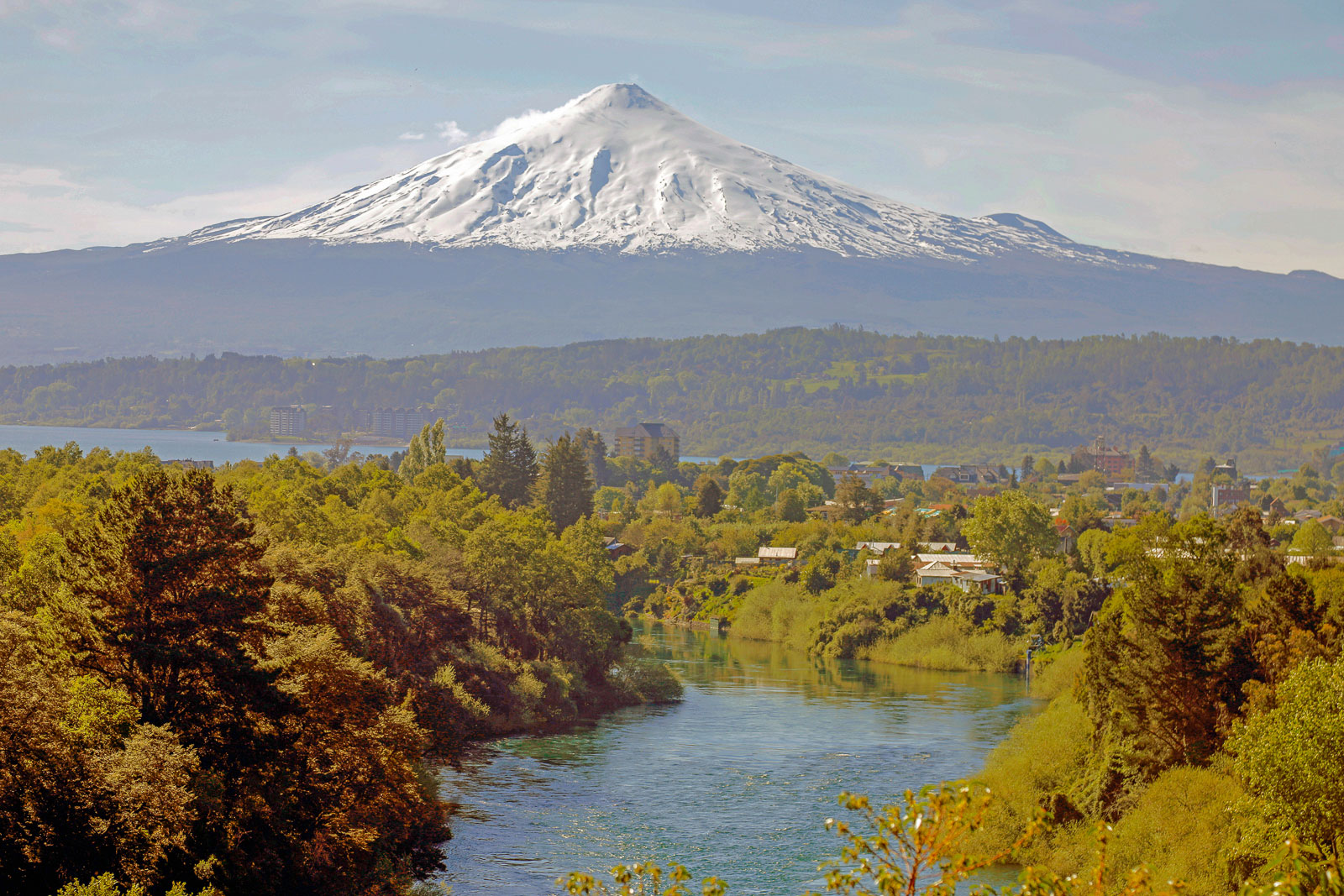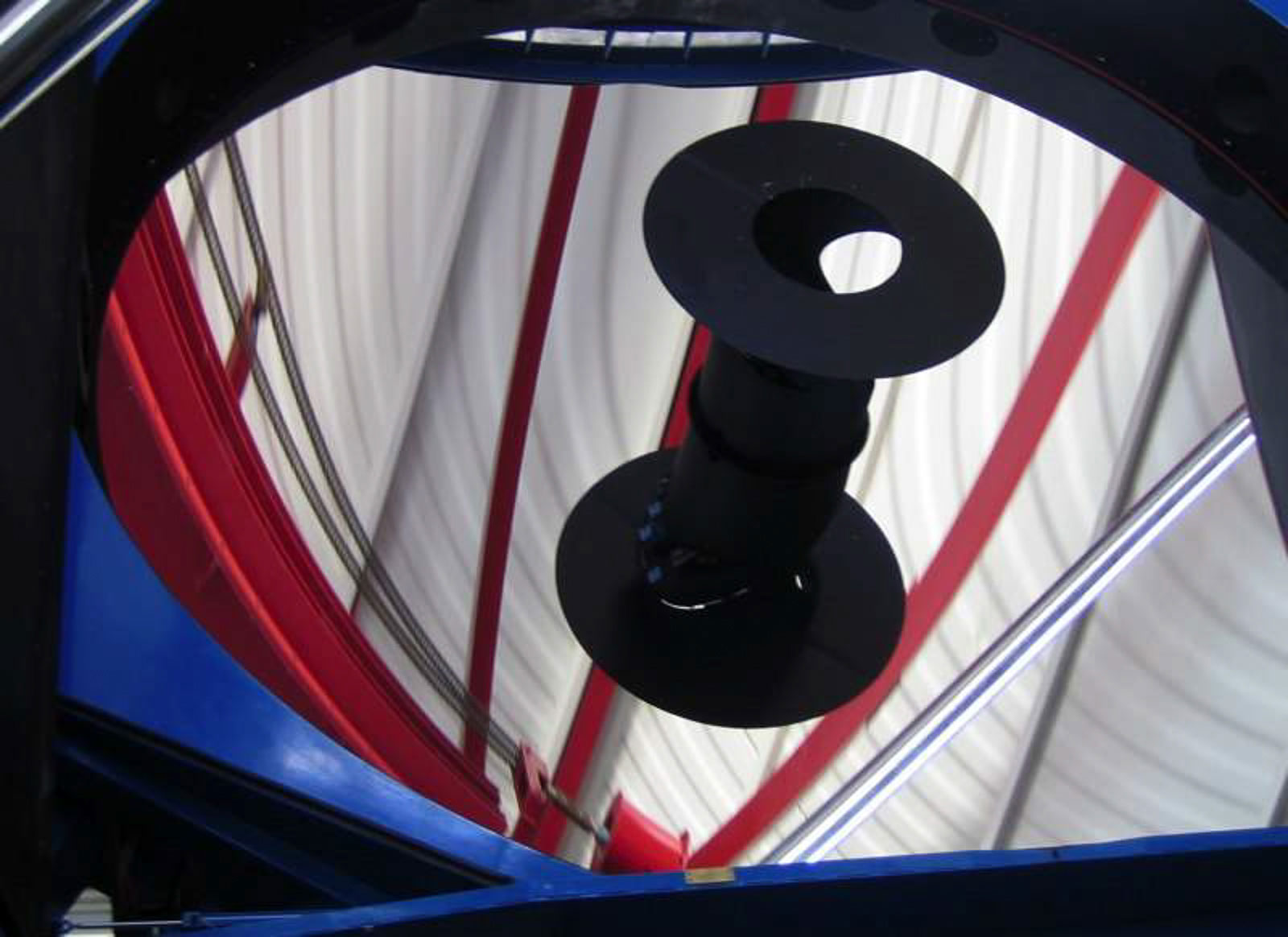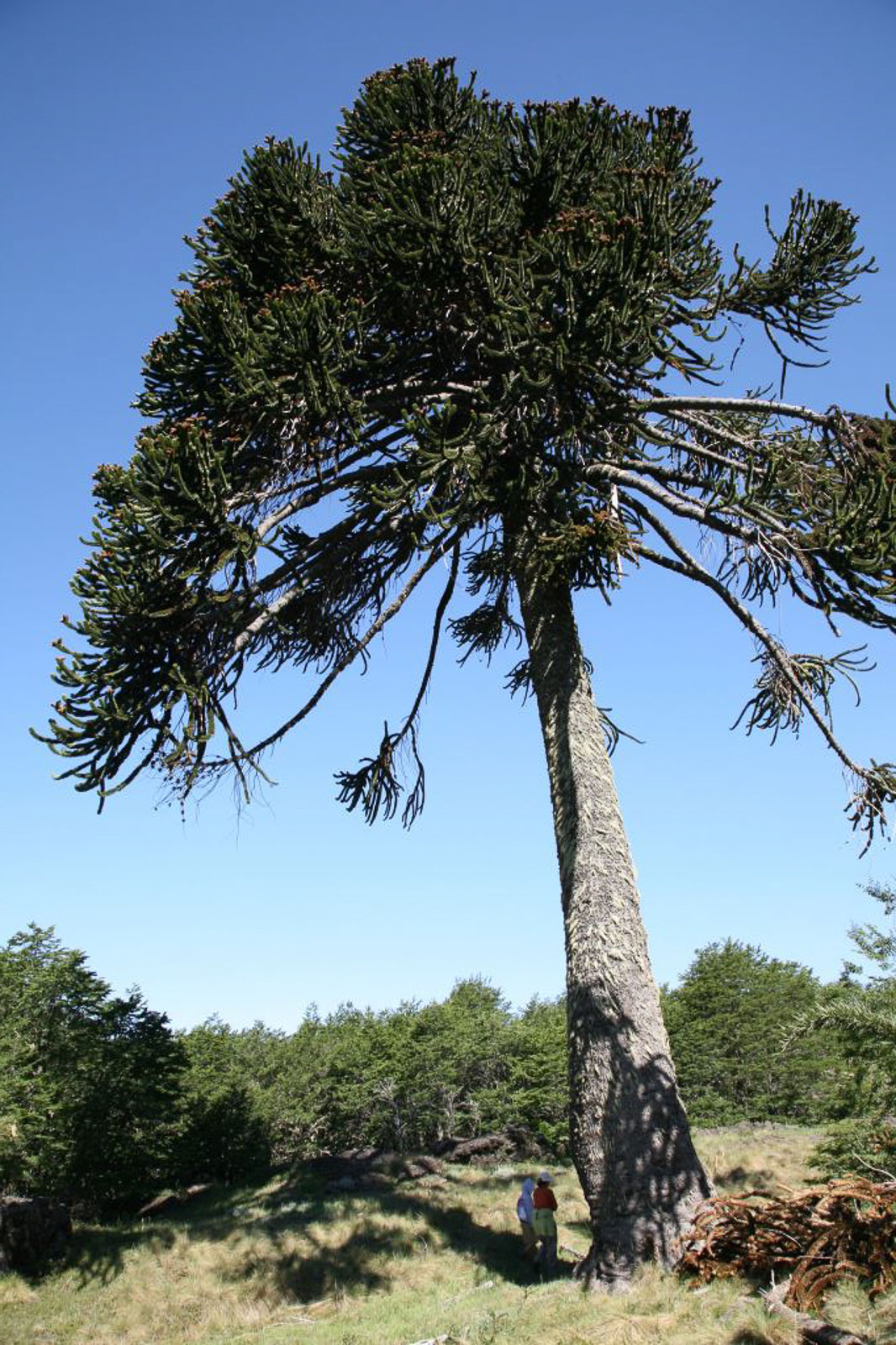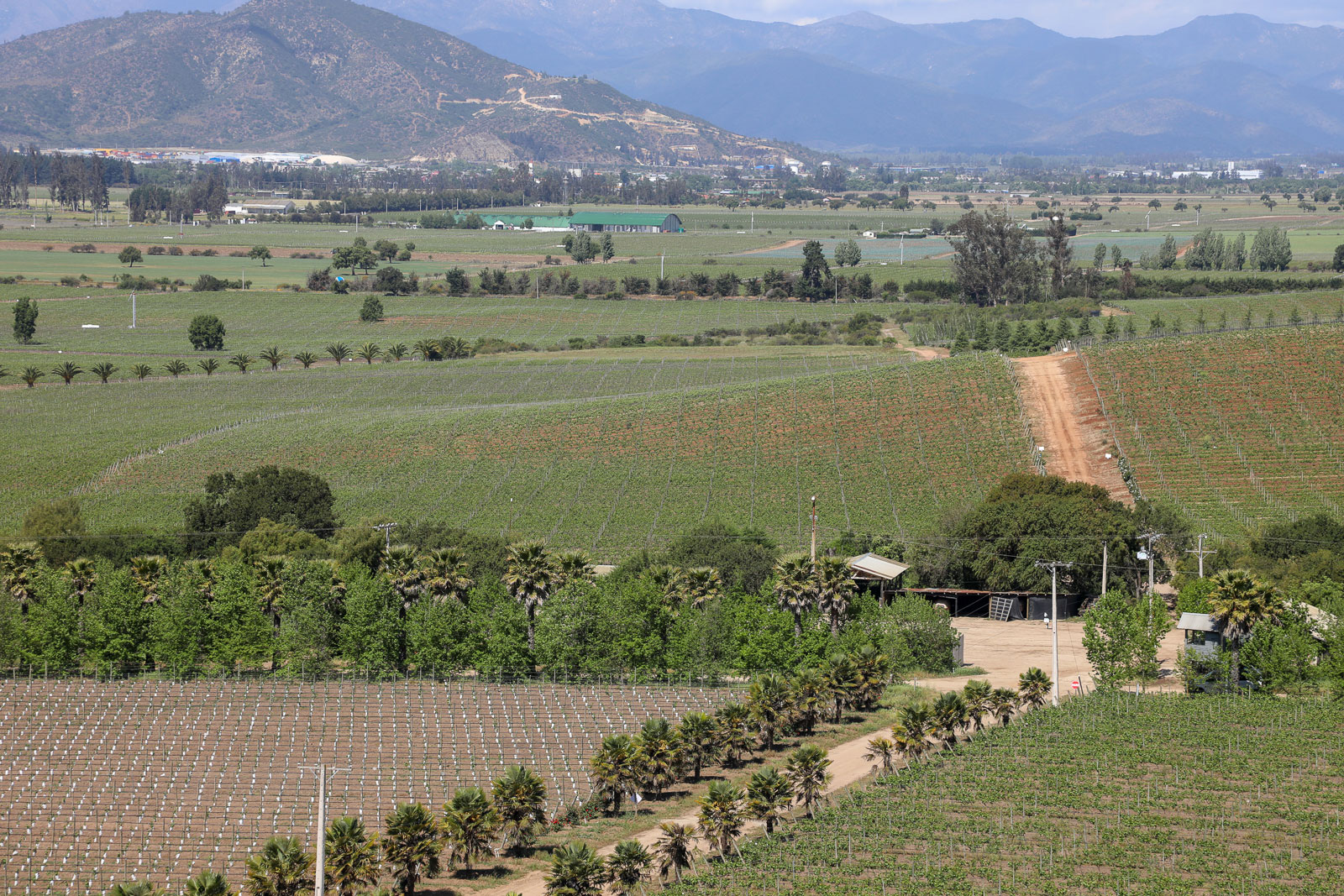
Visit Chile with UC Santa Cruz’s Inspired Expeditions
Explore one of the most spectacular corners of the world. We’ll first journey to see Valparaiso the historic port city of Chile and a UNESCO World Heritage Site. Next, we’ll venture north to see world-class observatories and behold the Southern Hemisphere’s dazzling evening skies. Go behind the scenes to meet astronomers who are peering deeper into the universe than ever before.
Through special permission see the amazing telescopes of the Magellan Project at Las Campanas Observatory and future site of The Giant Magellan Telescope as well as Gemini South and the Southern Astrophysical Research Telescope (SOAR). Finally, we travel Chile Lake District site of the total solar eclipse. The area is best known for its spectacular scenery made up of emerald green hills, snow-capped volcanoes, historic fishing villages, Chilean cowboys, farms speckled with cattle and sheep, lush forests, national parks, and clear lakes. Enjoy the remarkable views, hiking on a volcano, ancient araucaria forests, and geothermal baths. On our return to Santiago, we’ll have our farewell lunch at the Kingston Winery owned by an American family for five generations.

Chile and the Skies of the Southern Hemisphere
Travel Dates: November 30 – December 10, 2022
Program Cost (per person, double occupancy)
Superior Room: $8,035
Suite Room (limited availability): $8,096
Single Supplement, Superior Room*: $1,075
Sample Coach Airfare (San Francisco/Santiago/San Francisco)**: $745
*Please note that this is an additional cost.
** Subject to fuel surcharges
Extensions
Easter Island Pre-Trip Extension (per person, double occupancy): $3,150
Easter Island Pre-Trip Extension (single supplement): $550
Sample Round Trip Coach Airfare to Easter Island: $690
Patagonia Post-Trip Extension: $3,650
Patagonia Extension (single supplement): $550
Sample Round Trip Airfare to Punta Arenas: $365
**Passengers that were signed up on the Eclipse 2020 trip that has been postponed due to the COVID-19 pandemic will receive a $3,000 credit
Trip Fee Includes:
- Study leader’s lectures and discussions
- Accommodations and meals as specified in the itinerary
- Wine and beer with welcome dinner and farewell lunch
- Pre-trip to Easter Island includes an open bar at Hangaroa Hotel and Patagonia Post-Tour includes an open bar at the Remota
- Wine tasting and lunch at a Casablanca Valley vineyard
- All land transportation
- Four in-tour flights: Santiago to La Serena, La Serena to Santiago, Santiago to Temuco, Temuco to Santiago, included at a cost of $450 per person; increases in the in-tour airfare after the initial pricing of this program are not included
- Professional guides and tour director throughout
- Gratuities to local guides and drivers
- Airport transfers for group flights
- Domestic airport departure taxes
- Entrance fees
- Baggage handling
- Pre-departure information
Chile and the Skies of the Southern Hemisphere
Travel Dates: November 30 – December 10, 2022
Wednesday, November 30, 2022
Depart from your home city for an overnight flight to Santiago, the capital of Chile.
Overnight flight.
Thursday, December 1, 2022
Arrive this morning in Santiago and transfer to your hotel. An afternoon city tour including a tour of the Pre-Columbian Museum will introduce us to this city at the foot of the Andes. This evening gather for an orientation and welcome dinner.
Accommodations: Hotel Plaza el Bosque Park & Suites Ebro
(D)
Friday, December 2, 2022
This morning fly north to La Serena and transfer to our hotel which overlooks the ocean. Enjoy an afternoon excursion to the Elqui Valley with Pisco tasting at a local distillery. Gather for an evening visit to a local observatory for stargazing.
Accommodations: La Serena Club
(B, L, D)
Saturday, December 3, 2022
Today we travel north of La Serena by road to Las Campanas Observatory (pending final confirmation) in the Chilean Andes for a day-long tour of the Magellan Project site and the two 6.5-meter optical telescopes that are housed there. The Giant Magellan Telescope (GMT) is also being constructed here which is scheduled to be completed in 2027. The GMT will use seven of the world’s largest mirrors as primary mirror segments, each 8.417 m (27.61 ft) in diameter and have a higher resolution than the Hubble or Webb Space Telescopes. Return to the hotel and take the evening at your leisure until dinner.
Accommodations: La Serena Club
(B, Picnic L, D)
Sunday, December 4, 2022
This morning enjoy exclusive visits to the Gemini South Telescope, Southern Observatory for Astrophysical Research (SOAR), and the Vera C. Rubin Observatory all located on the peak of Cerro Pachon, an 8,900-foot high mountain in northern Chile. The Gemini Observatory is an 8.1-meter telescope and the adjacent SOAR a 4.1-meter aperture telescope. The Vera C. Rubin Observatory, currently under construction, is an 8-meter-class telescope coupled to a 3.2 gigapixel camera-the world’s largest digital camera ever fabricated for optical astronomy. All visits are pending final confirmation. Late this afternoon we’ll fly from La Serena back to Santiago.
Accommodations: Plaza El Bosque Ebro
(B, Picnic L)
Monday, December 5, 2022
This morning we depart for a visit to the garden city of Vina del Mar and the historic port city of Valparaíso. In Vina del Mar stroll along the Avenida Peru and take in the stunning ocean views. In the afternoon, continue to Valparaíso built in the 16th century on a total of forty-three hills. The city is now a UNESCO World Heritage site. Stroll through the Concepción and Alegre neighborhoods and ride the century-old hillside ascensores (elevators). Retrace the steps of James Lick, the benefactor of the Lick Observatory, who lived in Valparaíso for four years. Return to Santiago to our hotel.
Accommodations: Plaza el Bosque Ebro
(B, L)
Tuesday, December 6, 2022
This morning fly south to Temuco. On arrival, we’ll transfer to Conguillío National Park known for its ancient groves of Araucaria trees and volcanic lakes and lagoons that surround the Llaima Volcano. The park was chosen by the Discovery Channel to film their series “Walking with Dinosaurs,” due to its landscapes resemblance of prehistoric times.
Accommodations: Diego de Almagro Hotel Temuco
(B, Picnic L, D)
Wednesday, December 7, 2022
After breakfast and hotel check out, we visit the local Temuco farmers market, La Feria Pinto, for a glimpse of the local culture. We continue to Lake Villarrica for lunch at a lakeshore restaurant. Following lunch, proceed to Pucón where a short city tour will introduce us to this small charming town embedded in the Andes foothills and the snow capped Villarrica Volcano. Check in to the Green Park Hotel for an afternoon at leisure. Dinner at the hotel.
Accommodations: Green Park Hotel Pucon
(B, L, D)
Thursday, December 8, 2022
Today, we’ll enjoy an excursion to Villarrica Volcano and Lagoon. A walk at the base of Volcano Villarrica will give you a beautiful view over the lakes Villarrica, Colico, Caburgua, and Calafquén. Later that day, relax with an excursion to local thermal hot springs.
Accommodations: Green Park Hotel Pucon
(B, Picnic L)
Friday, December 9, 2022
After breakfast transfer to the Temuco Airport for a flight back to Santiago. On arrival, we’ll drive to the Casablanca Valley where renowned Chilean wines are produced. We’ll have our farewell lunch at the Kingston Family Vineyards. Learn how this vineyard founded by an American family including Harvard, Princeton and Stanford graduates has evolved into one of Chile’s hottest, award-winning boutique wineries. Afterward, we’ll transfer to Santiago’s international airport for overnight flights home.
(B, L)
Saturday, December 10, 2022
Arrive in the US and connect with flights home.
Matthew Shetrone, Deputy Director of UC Observatories
A love of exploration
As a young child, Matthew Shetrone loved to explore. He would go hiking with his Boy Scout troop and marvel at archaeological finds. Later, he embarked on travels to Australia and Europe. Today, Matthew has expanded his horizons to exploring extra-solar planets, massive galaxies, the early universe, and other phenomena. Like explorers and archeologists he enjoys forging into the darkest and least known areas of our world with the most cutting-edge tools available.
See the broader world outside science
Matthew credits his teacher Gale Cope as the most impactful person in his early life. She often pushed him “to see the broader world outside of science”: theater, art, athletics, nature, and culture, and wanted all of her students to be well-rounded people and active community leaders. Her influence on Matthew continues to shine today through his love for experiencing foreign cultures by traveling, and running on new trails or neighborhoods.
Matthew completed his undergraduate degree in astronomy at the University of Texas at Austin. He then attended UC Santa Cruz where he completed his Ph.D. in astronomy and astrophysics. From his experience with optical telescopes at McDonald Observatory as an undergraduate and the Keck and Lick Observatories as a graduate student, Matthew was hooked on optical astronomy. Ph.D. in hand, he went south of the equator to the European Southern Observatory (ESO) in La Silla, Chile.
Broadening one’s scope
Matthew quotes his experience in Chile as being life-changing. “Working as a postdoctoral with ESO was by far the culturally richest experience in my life. On a daily basis I would hear English, French, Italian, German, and of course, Spanish. Working closely with European and Chilean astronomers opened new ways of thinking and new collaborations that would last me a lifetime.” After several years abroad Matthew moved back to Texas to help develop science operations for an innovative optical telescope, the Hobby-Eberly Telescope, which had the largest optical mirror in the world. With the completion of a recent upgrade to dedicate large amounts of that telescope time towards solving the evolution of Dark Energy, Matthew was ready for new challenges.
“Who could have a better job than mine?”
Matthew has returned to the University of California system as the Deputy Director for UC Observatories. Regarding his job, he says, “On a daily basis I get to work with some of the most talented astronomers in the world and the largest and most well equipped telescopes in the world. Who could have a better job than mine?”.



































